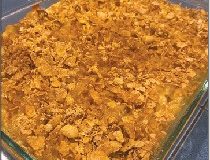LOADING
Previous Article
L’Dor V’Dor – Miriam’s Chicken Soup
Next Article
L’Dor V’Dor – Regina’s Kugel
You Might also Like

New Year, New Chefs: Cooking with Kids by Chef Debby Segura
September 5, 2022

Ideas for Your Post Bar Mitzvah Brunch
June 20, 2022

The Original Farmer’s Market Has All Your Seder Needs
April 7, 2022

Lenny’s Corn Ribs
April 7, 2022



































